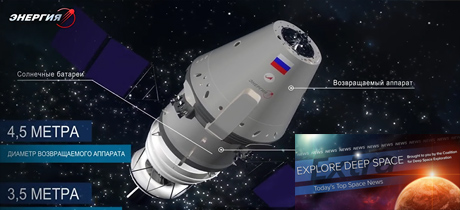In Today’s Deep Space Extra… Emerging U.S. Senate 2019 appropriations measure backs continued development of NASA’s Wide Field Infrared Survey Telescope (WFIRST). Growing Martian dust storm stalls NASA’s long running Opportunity rover. NASA Administrator Jim Bridenstine suggests that former NASA astronaut Janet Kavandi be nominated as the agency’s second in charge.
Policy and Budget
Senate bill restores funding for NASA science and technology demonstration missions
Space News (6/12): The U.S. Senate Appropriations’ Commerce, Justice and Science subcommittee on Tuesday voted to back continue development of NASA’s Wide Field Infrared Survey Satellite (WFIRST) mission that the White House wishes to cancel in its proposed 2019 budget. Considered an astrophysics high priority by the National Academy of Sciences, WFIRST’s mission is to explore dark energy and observe the atmospheres of extra solar planets for signs of bio markers. The Senate version of the 2019 spending measure also funds four Earth science missions targeted for cancellation by the White House. In all, the panel backed $21.3 billion for NASA in 2019, $1.4 billion more than the White House request and $587 million above the 2018 total. The Senate bill, like the House one, offers flat funding for the Space Launch System (SLS), at $2.15 billion, and the Orion spacecraft, at $1.35 billion. Both bills offer $504 million for development of the Lunar Orbital Platform-Gateway (LOPG). Included in the Senate bill is $255 million to complete construction of a second mobile launch platform for SLS, which was partially funded in the 2018 omnibus spending bill.
Human Space Exploration
Next generation Russian crew vehicle enters initial testing
Nasaspaceflight.com (6/12): Testing of Russia’s new Federatsiya, or Federation, human spacecraft has entered an aerodynamic assessment phase. Earth orbital and lunar versions of the spacecraft and corresponding launch vehicles and ground launch facilities are under development, though with financial challenge. Federation is to be paired with a new STK launch vehicle for their first lunar mission in 2028, according to the report.
Space Science
NASA’s Curiosity rover is tracking a huge dust storm on Mars (photo)
Space.com (6/12): Mars is undergoing a major dust storm, and at least one U.S. surface mission, the 14-year-old, solar powered Opportunity rover, is in the thick of it. Meanwhile, NASA’s larger, six-year-old, nuclear powered Curiosity rover is monitoring the storm. NASA plans a status briefing on the storm and its Martian assets on Wednesday.
NASA loses contact with its dust-choked Opportunity rover on Mars, but stay tuned
GeekWire.com (6/12): NASA has lost contact with Opportunity, the golf cart sized rover that landed on Mars in January 2004, for what was to be a 90 day mission. The loss of contact appears associated with the major dust storm underway on Mars. Opportunity is solar powered and depends of sunny conditions to recharge its batteries. NOTE: NASA will provide an update on the Mars dust storm and the status of the Mars Rovers today at 1:30 pm ET. Yesterday’s full status report is available here: go.nasa.gov/2JvHVtn
NASA continues Mars sample return mission studies
Space News (6/12): Last week, a study from NASA scientists confirmed the presence of organic molecules on Mars as well as fluctuating concentrations of methane in the atmosphere, both indicators the red planet hosts or once hosted life forms. However, there are non-biological explanations for each observation. But the discoveries have increased the significance of NASA’s Mars 2020 rover mission, which is to cache samples of Martian rock and soil for eventual return to Earth. NASA is studying sample return options with possible international and commercial partners. A strategy might emerge late next year, Thomas Zurbuchen, NASA associate administrator for science, told a recent Space Transportation Association briefing.
Universe Today (6/12): Speculation swirls over the possible presence of an undiscovered planet in the distant outer solar system, a Planet X, that would explain the gravitational behavior of Trans Neptunian Objects. However, a University of Colorado, Boulder, team recently proposed an alternate exploration — interactions among the many Kuiper Belt Objects that share the realm of the distant solar system.
Other News
Bridenstine rooting for Janet Kavandi to be his Deputy
Spacepolicyonline.com (6/12): In remarks Tuesday before the Space Transportation Association, NASA Administrator Jim Bridenstine expressed support for Janet Kavandi, a former NASA astronaut and currently director of the agency’s Glenn Research Center as Deputy Administrator. The post must be filled by a White House nominee confirmed by a majority vote of the U.S. Senate.

